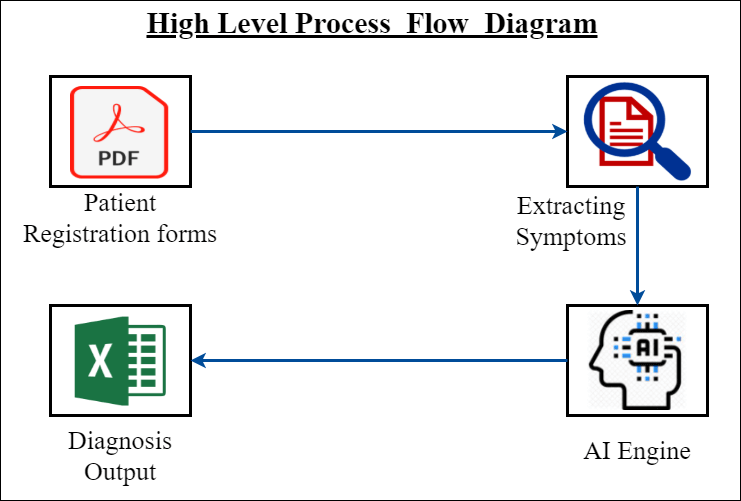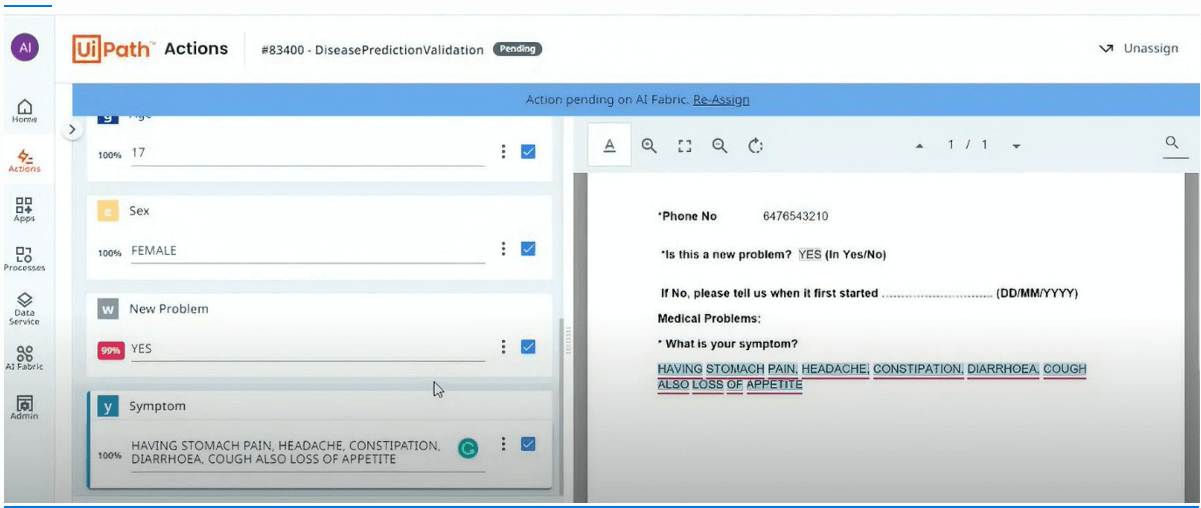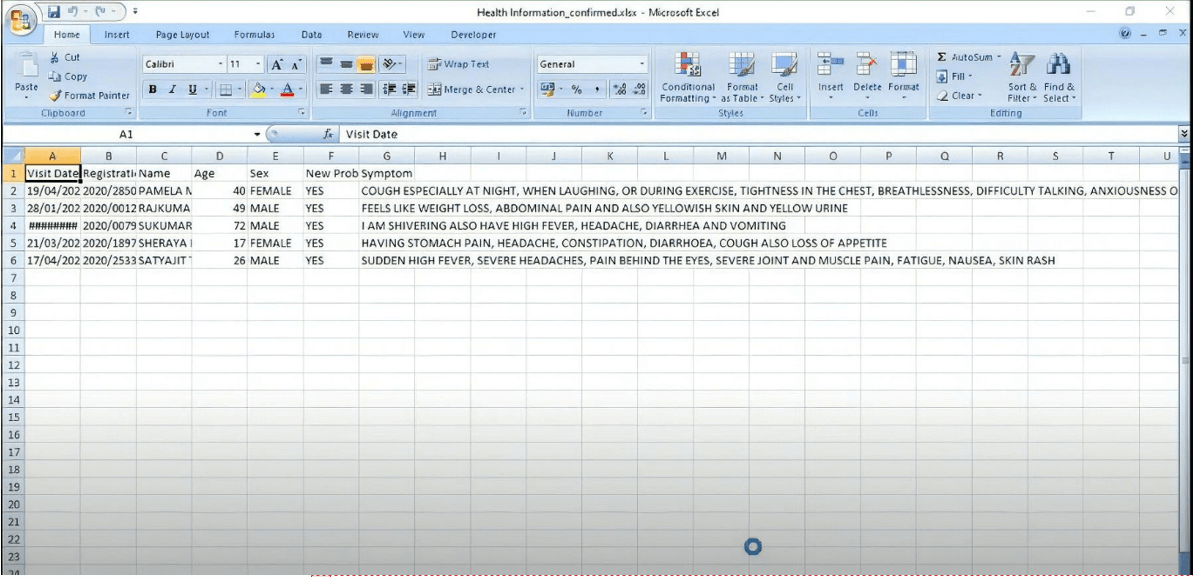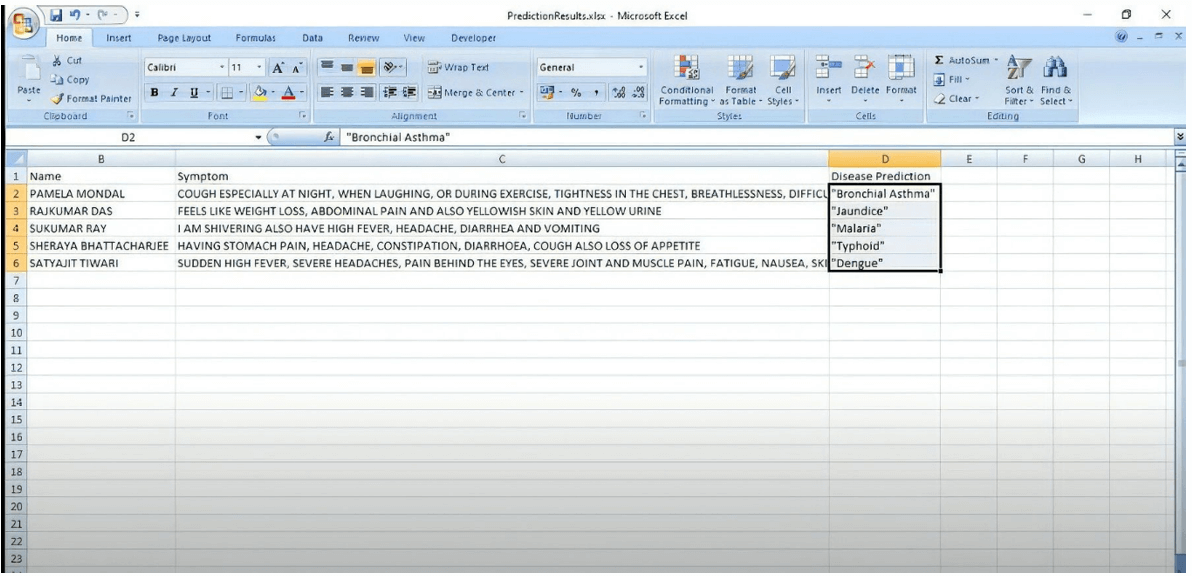Initial Disease Detection with AI Center, Document Understanding, and Action Center
Initial Disease Detection with AI Center, Document Understanding, and Action Center
Share at:

In this pandemic, the number of doctors and nurses is not sufficient for normal healthcare practice. They are under tremendous pressure to provide necessary treatment to the patients who have been diagnosed with 2019 novel coronavirus (COVID-19). In general healthcare services, the most important requirement is to diagnose the disease appropriately based on patients’ symptoms. To combat the situation, an artificial intelligence (AI)-enabled robotic process automation (RPA) application can be utilized to provide provisional (initial) disease detection.
The following use case performs an automatic detection of provisional disease based on the symptoms provided by patients. The symptoms will be collected through patients’ registration form (digital/handwritten) during the registration of a patient in a clinic. After receiving the registration forms, the symptoms are extracted with the help of a Document Understanding (DU) module. On receiving the symptoms, the AI application diagnoses a disease for those symptoms. The diagnosed disease is then stored in the output file as the provisional diagnosis for assisting the doctors in the treatment process. This AI-enabled RPA application can offload the healthcare professionals involved in the process of initial disease diagnosis. It is worth mentioning that this use case replaces the existing manual process, which involves entering patients’ data (unlimited) along with the provisional disease in the system. The solution is designed and implemented using UiPath Document Understanding, UiPath AI Center, and UiPath Action Center.
The high-level process flow diagram is shown below.

During the registration process the patient needs to fill in a digital/handwritten form, which will contain the details of the patient and the symptoms. When a handwritten form is submitted, it is digitized using a scanner. All the forms are stored in a PDF format in a specific folder.

A robot is used to read the patients’ registration forms from the specific folder and extract information from those forms using DU module. The extracted information (i.e., patient ID, symptoms, etc.) is then fed into an AI model as input (we had used digital data, but it can also be trained for handwritten forms).

A Naive Bayes classifier is used as the AI model, which grabs the actual relationship between a disease and its related symptoms very efficiently. The AI model is developed and trained in Python framework. The AI model has been trained using a dataset featuring the possible symptoms and their corresponding diseases.
The trained model is then deployed in the RPA workflow through AI Center, making it available as an ML skill in the workflow. After the model is available as an ML skill, it is integrated in the RPA bot, thus creating an intelligent robot. The model gets the input (symptoms) from the DU module and diagnoses the most probable disease. The model serves queries efficiently, with a high degree of accuracy if the input symptoms are related to a disease. The diagnosed disease is then stored in a Microsoft Excel file along with the patient ID. This file is then accessed by the doctors or the concerned health worker for further processing.

For each patient, along with the predicted diagnosis from the AI model, the doctor’s diagnosis can be used to validate the model. The model can be retrained if the diagnosis of the model differs from the doctor's diagnosis.
The objective is to remove the effort of the doctor or nurse who is involved with the initial diagnosis process. It will save valuable time for skilled healthcare professionals and keep them involved in other important healthcare services.
Using UiPath Document Understanding, Action Center, and AI Center, we were able to detect 100 diagnoses per day for a clinic. Presently, this application is used for initial detection of diseases. However, this application might be useful for final detections if the model turned on a sufficiently larger dataset. This application can be used for assisting the doctors in the diagnosis process. It can also be very helpful in times of need when there is a lack of healthcare professionals, or they are under extreme pressure due to an emergency.

Assistant Professor, DCG Data – Core Systems India
Get articles from automation experts in your inbox
SubscribeGet articles from automation experts in your inbox
Sign up today and we'll email you the newest articles every week.
Thank you for subscribing!
Thank you for subscribing! Each week, we'll send the best automation blog posts straight to your inbox.



